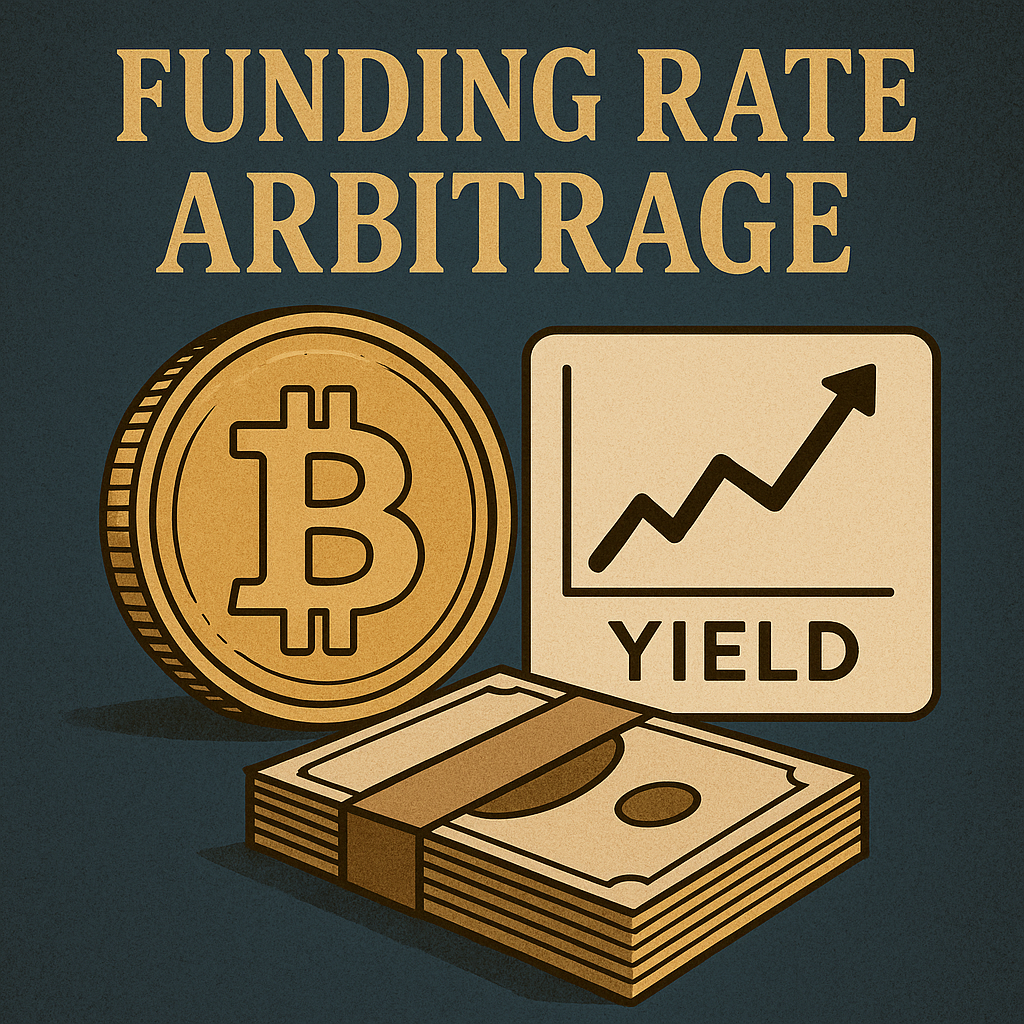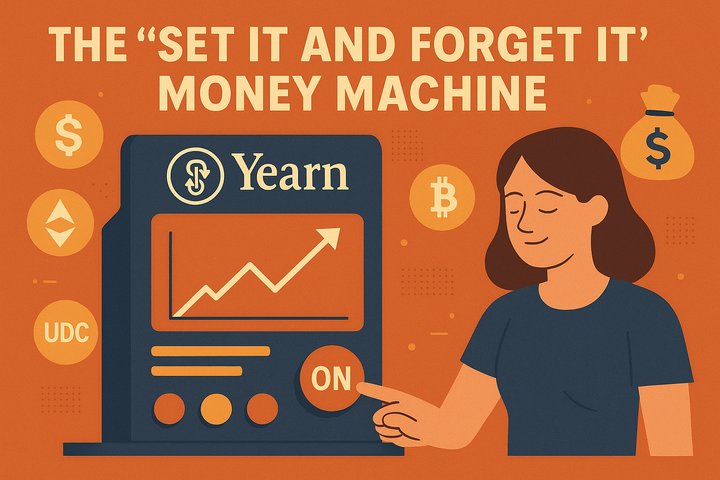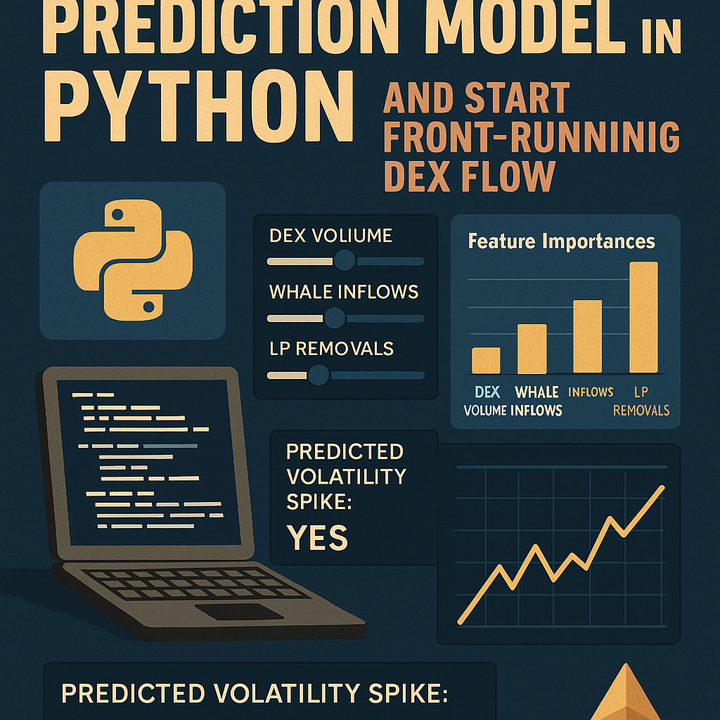Why Funding Rate Arbitrage Is Still the Smartest Free Lunch in Crypto

In the casino of crypto, most people show up to play. A few show up to run the tables. And the smartest ones? They're collecting rent from both.
Welcome to the world of perpetual funding rate arbitrage. A strategy where market-neutral traders earn steady yield not from price bets, but from the structural greed of leveraged longs. It's been around for years, but in 2025 it's more lucrative, more accessible, and more systemically important than ever.
While most of crypto yield has faded into irrelevance or blown up in flames, funding arbitrage remains. Because when markets go vertical, someone has to pay for the leverage. And that someone is the euphoric trader going 50x long on Bybit. If you're on the other side of that trade, you're collecting the interest. That's what funding rate arbitrage is all about.
First Principles: What Is the Funding Rate?
Perpetual futures (or "perps") are the most popular crypto derivatives. They let you bet on price with leverage, but unlike traditional futures, they don't expire. To keep the perp price aligned with the spot price, exchanges use a mechanism called the funding rate.
Here's how it works:
- If the perp is trading higher than spot, longs pay a small fee to shorts.
- If it's lower, shorts pay longs.
- This fee is the funding rate, usually paid every 8 hours.
The funding rate is calculated based on the difference between perp and spot prices. It reflects which side of the trade is more crowded. In bullish markets, perps trade above spot, and the funding rate is positive. That means longs are paying shorts, often multiple times per day.
As a trader, you can collect this fee by holding a neutral position:
- Buy spot BTC
- Short BTC perpetual futures
- Collect the funding rate every 8 hours
You are not betting on price. The position is delta-neutral. Your long cancels out your short. What remains is the funding income, which is essentially a yield stream paid by leveraged traders who want exposure at any cost.
Why It Exists: Structural Leverage Hunger
Funding arbitrage exists because most traders want long exposure. And they want it now. Perpetual swaps are the easiest way to get that, with built-in leverage and deep liquidity. But that convenience comes at a cost. The cost is the funding fee.
In bull markets, this fee becomes significant. When Bitcoin is ripping, everyone wants to get long. Funding rates can spike from 0.01% per 8 hours to 0.05% or even higher. That’s 0.15% per day, which annualizes to more than 50% yield.
It’s not theoretical. These rates have been live on Binance and Bybit for years. They're baked into the market structure. Traders will pay them, and neutral players will collect them. In that sense, it's not just a strategy. It's an income stream created by the market's natural bias.
From Prop Desk to Protocol: The Rise of USDe
For years, funding arbitrage was a pro-only game. You needed capital, multiple exchange accounts, and tight execution. That changed with the rise of Ethena.
Ethena wraps the strategy into a stablecoin called USDe. The protocol holds spot crypto, shorts the corresponding perp, and issues a synthetic dollar. Users can stake their USDe (as sUSDe) to earn the yield from this arbitrage.
The yield comes from real funding rates on exchanges. No inflation. No Ponzi games. Just structural payments from leveraged traders to delta-neutral liquidity providers.
This is a major shift. It turns a manual hedge fund strategy into a passive DeFi yield stream. Anyone with USDe can now access a version of the funding arbitrage trade, with none of the operational complexity.
Platform Yield Comparison: Who Pays Best?
Let’s look at the current state of the market. Funding rates vary by exchange, pair, and volatility. Here’s how they stack up for BTC perps.
| Platform | Average Funding APY (BTC) | Market Notes |
|---|---|---|
| Binance | 10% to 15% | Deep liquidity, efficient, quick arbitrage |
| Bybit | 12% to 16% | Higher spikes, retail-driven, more volatility |
| OKX | 10% to 13% | Mirrors Binance closely, solid institutional base |
| MEXC | 15% to 25% (volatile) | Altcoin-heavy, aggressive moves, high slippage |
| dYdX | 8% to 12% | On-chain, permissionless, lower size ceilings |
| Ethena (sUSDe) | 10% to 18% | Passive, DeFi-native, no direct position needed |
The choice depends on your risk tolerance. Binance and OKX offer stability. Bybit and MEXC offer spikes. dYdX gives you custody. Ethena gives you abstraction. Traders rotate between these depending on market conditions and capital requirements.
Who’s Earning What?
Here’s how the yield looks based on different strategies in 2025.
| Strategy | Estimated APY | Risk Exposure | Notes |
|---|---|---|---|
| Manual Arb (CEX) | 15% to 20% | Exchange risk, liquidation | Best returns, highest operational burden |
| Arb on dYdX | 10% to 15% | Smart contract, gas risk | DeFi version, limited size |
| USDe staking (sUSDe) | 10% to 18% | Protocol, peg risk | Set-and-forget exposure to funding yield |
Returns are real. The risk is what changes. If you want control, go manual. If you want passive, buy the protocol. The good news is that both still work.
The Risks: Not Your Grandma’s Savings Account
This is crypto. Things go wrong. Here are the core risks:
- Exchange Risk: If you're on a CEX and it collapses, you lose your position. FTX reminded us why that matters.
- Liquidation Risk: A sharp move against your position can liquidate the short, even if your spot covers it. Margin management is critical.
- Negative Funding: Rare, but happens in panics. If the market flips bearish, you may pay the funding rate rather than collect it.
- Depeg Risk: For USDe or other stablecoins running this model, a sustained downturn or mismanaged strategy can cause a loss of peg (it can lose its $1 value, putting holders at direct financial risk). It's not just theoretical. Protocol design matters.
None of these are new. But they separate real arbitrage from yield farming fantasy. Funding arb is elegant, but not risk-free.
The Last Honest Yield
Funding rate arbitrage is one of the only strategies in crypto that continues to deliver uncorrelated, sustainable income. It doesn't rely on hype. It doesn’t collapse when token incentives dry up. And it scales with market behavior.
When crypto runs hot, funding rates rise. When traders chase leverage, yield flows to the neutral side. All you have to do is be there to collect it.
Ethena has turned that into a consumer product. dYdX keeps it on-chain. Binance and Bybit keep it liquid. The edges may compress, but the engine still runs.
You don’t have to gamble in the crypto casino. You can rent out the chips instead. Just understand who’s paying you, why they’re paying, and how to hold the line when the market flips.


